How to Apply Weed Killer Herbicides on Potatoes
A common way of controlling weeds on potatoes is by weeding. But in some cases it is impossible to apply this option - other methods are needed. How to get rid of weeds in a potato field and how to treat plantings, we will tell you in the article.
The content of the article
How to deal with weeds on potatoes
In the event that foreign plants grow along with potatoes on a potato bed, farmers use one of the control measures:
- weeding, hilling and loosening the site.
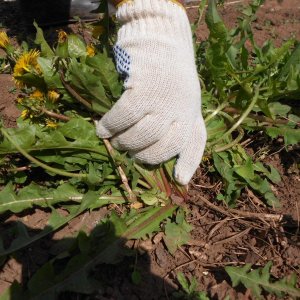
- use of herbicides.
The use of herbicides in small household areas is rarely advisable. As a rule, this is due to the appearance of quarantine weeds in the garden - ragweed, dodder and similar plants, which cannot be dealt with mechanically.
Important! Weeds with a powerful root system, such as wheatgrass, cannot always be removed mechanically. Only herbicides are effective against them.
How do they interfere
Why use herbicides - what exactly are weeds dangerous for?
Dangerous effects of weeds on potatoes:
- Weeds take food away from cultivated plants. This is especially dangerous on soils not rich in humus, where the amount of nutrients is small. The growth of weeds leads to a sharp drop in the yield of the garden crop.
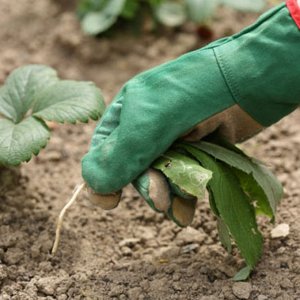
- Weeds serve as a nutrient base for potato pests. For example, weeds provide shelter for the Colorado potato beetle: this can lead to the complete destruction of the crop. A similar situation with a wireworm, a bear, etc.
- Weeds carry diseases in garden crops.
By the type of development, pest plants are divided into groups:
- Parasitic - not capable of independent growth, feeding on the juices of the host plant. Common examples are dodder and broomrape.
- Non-parasitic, growing independently and competing with potatoes for nutrients in the soil. This group includes sow-thistle, horsetail, wheatgrass, field bindweed, etc.
The days when potatoes were a low-maintenance crop are long gone. Now, without chemicals, getting a full harvest is problematic: the Colorado potato beetle and late blight will destroy some of the plants, and the weeds will finally strangle the crop.
What is a herbicide
A herbicide is a chemical agent that destroys or inhibits the growth of any plant other than the crop being grown. In particular, for potatoes, the use of substances that inhibit cereal plants is especially important.
Types of herbicides
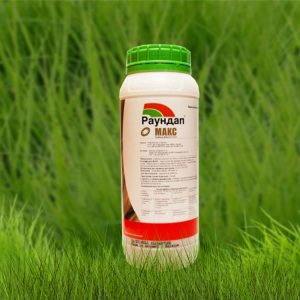
According to their biological effect, potato herbicides are divided into the following types.
Continuous action
Such preparations destroy any plants, except for nightshade, throughout the entire growing season.
Continuous herbicides include:
- Antiburian;
- Hurricane and Hurricane Forte;
- Roundup;
- "Tornado" (all varieties).
This type of herbicide is especially effective for pre-planting treatment of an area infected with wild oats, wheatgrass or bindweed.
Important! Since continuous herbicides are not selective, they can destroy the potato plantings themselves. They also accumulate in the soil and tubers. They are used very carefully, observing the dosage.
Selective action
This type of chemical is used when the potato has already started to grow and has been attacked by a second wave of weeds. In this case, substances are used that destroy or inhibit the development of specific types of plants.
Selective potato herbicides include:
- "Lazurit" and "Lazurit Super" - burns out unwanted vegetation that has already appeared, seeds in the soil and young seedlings, but in case of an overdose it is dangerous for the potato itself - it cannot be used for early-maturing potato varieties;
- "Quickstep" - destroys monocotyledonous and dicotyledonous weeds;
- Escudo effective against sow thistle and wheatgrass;
- "Titus" - destroys cereal and broadleaf plants;
- Miura - the "killer" of cereals.
The main difference between solid and selective herbicides is their dosage. The higher the amount of applied preparations, the higher the risk of destruction of all vegetation, including potatoes.
Pre-emergence
This type of chemical is also called soil chemical. Its peculiarity is that these herbicides can be applied before the first green plants appear in the field or in the garden: it kills weeds at the seed or sprout stage.
Pre-emergence herbicides include:
- "Centurion" - for working with monocotyledonous weeds;
- Roundup is a universal herbicide;
- other glyphosate-based herbicides.
Postemergence
This type of substance is used after emergence of weeds (systemic herbicide "Panther"). Therefore, they are often referred to as contact chemicals.
The best herbicides
The following remedies are most popular when working with weeds in the field with potatoes.
"Zenkor"
This universal preparation is designed to suppress the growth of all weeds. Available as water-soluble granules. Destroys not only the plants themselves, but also their roots and seeds in the ground.
Used on the site in two stages:
- The first time they are treated a few days before the emergence of potatoes. In order to preserve a thin protective film of the drug on the site, after treatment with Zencor, they refrain from mulching, loosening the soil and watering the plants for some time.
- After 10-15 days, a second pass is made - for those weeds that nevertheless survived and germinated.
Zenkor cannot be used in sunny weather during the day, while the sun is at its zenith. Under direct rays, the drug "burns out" and becomes ineffective.
"Titus"
The drug is effective against annual and perennial weeds... It inhibits the growth of climbing perennials especially well. It helps to fight dodder, a dangerous weed that pierces potatoes and feeds on their juice.
"Titus" quickly penetrates the surface of leaves and further inhibits the growth of weed cells. It is completely absorbed after 3 hours, therefore watering is highly undesirable during this period.
The activity of "Titus" does not depend on the moisture level of the site.
Treatment of potatoes from weeds with "Titus" is carried out once. It is dissolved in water and sprayed with potato bushes before hilling. After spraying for two weeks, mechanical weeding or other soil treatment is not recommended.
"Herbitox"
Destroys weeds by inhibiting photosynthesis in aerial seedlings. The drug is not selective, it affects all plants. The active substances are sodium, potassium and dimethylamine salts.
"Lapis lazuli"
A universal drug. It is used before and after germination. Affects the roots and leaves of weeds. On potatoes it is used once a season - before the bushes reach a height of 10 cm. The main active ingredient is metribuzin.
It is considered one of the most powerful drugs. Therefore, it is extremely important to respect the dosage specified by the manufacturer.
How to apply herbicides
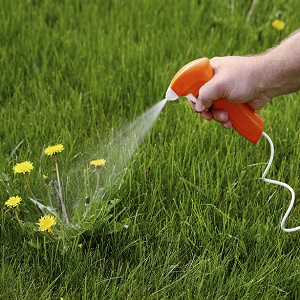
Preparations for weed control are used in strict accordance with the manufacturer's instructions.
General principles of application:
- A working solution is prepared. It is advisable to use soft water (thawed, rain or specially softened) and glass or plastic containers.
- The solution is poured into a spray bottle.
- Adjust the sprayer in accordance with the manufacturer's instructions.
- The working solution is applied to weeds or soil.
Processing rules
When working with herbicides, remember:
- do not work with drugs at temperatures above + 25 ° С;
- it is undesirable to use them in direct sunlight;
- repeated use of the same drug is permissible if it is permitted by the manufacturer and there is an urgent need for it;
- in small areas it is better to refrain from using the herbicide, replacing it with mechanical weeding and hilling.
- when planting potatoes shallowly, it is undesirable to use chemicals: there is a risk that they will destroy the crop.
What should be the effect after treatment
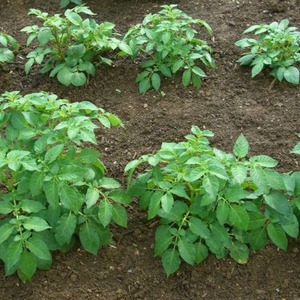
The best effect when using herbicides is the complete death of weeds, although this is not always achievable.
Outwardly, the result is manifested as follows:
- lodging, wilting and drying of weeds;
- the disappearance of seedlings of any other species, except for potatoes.
Additional agents that enhance the effect of herbicides
As a rule, herbicides do not need additional agents. However, in some cases, the following measures are used to improve efficiency:
- mixing with soapy water - in this case, the drug forms a film on the surface of the weed, enhancing the effect;
- introduction of drugs with drip irrigation. This method, called herbigation, is especially effective in industrial potato cultivation.
In what cases herbicides cannot be used
It is highly undesirable to use herbicides in the following cases:
- when growing early maturing potato varieties - the drug will not have time to act and will remain in the tubers;
- if potato shoots are affected by frost or pests;
- if grown grade potatoes are sensitive to herbicides.
It is interesting:
Conclusion
The use of herbicides reduces manual labor and eliminates weeds. To achieve a positive effect and for safety reasons, it is important to use the drugs in accordance with the manufacturer's instructions.